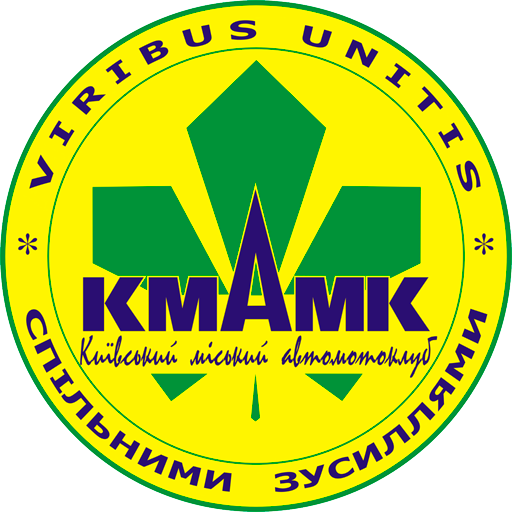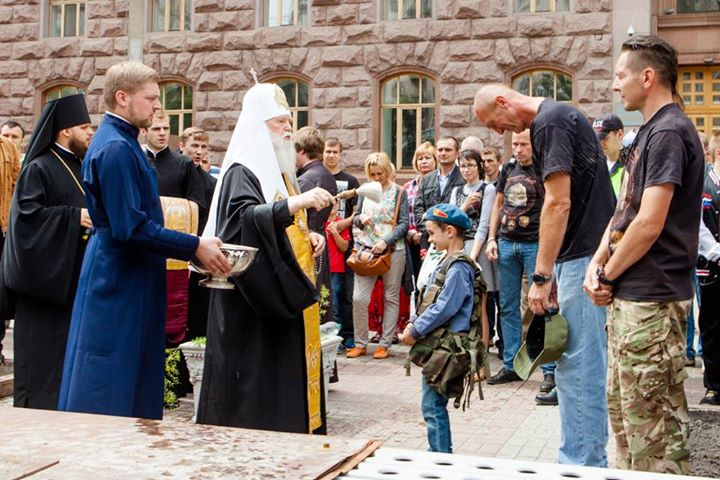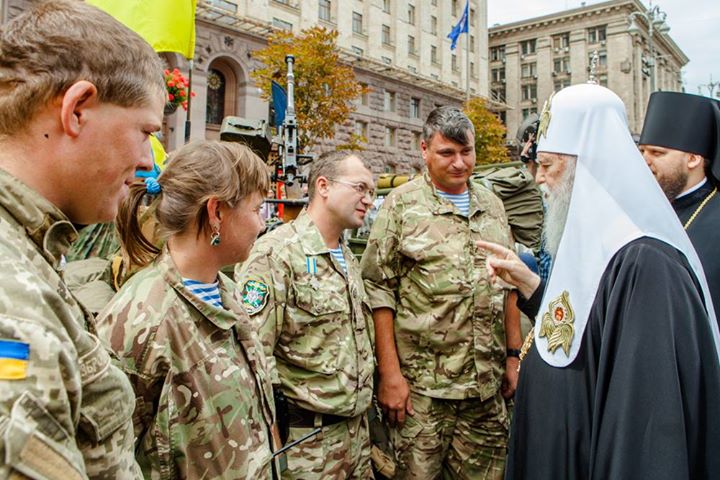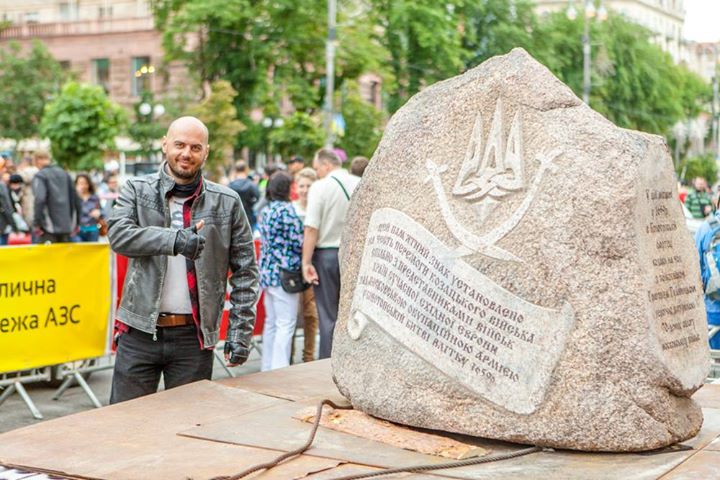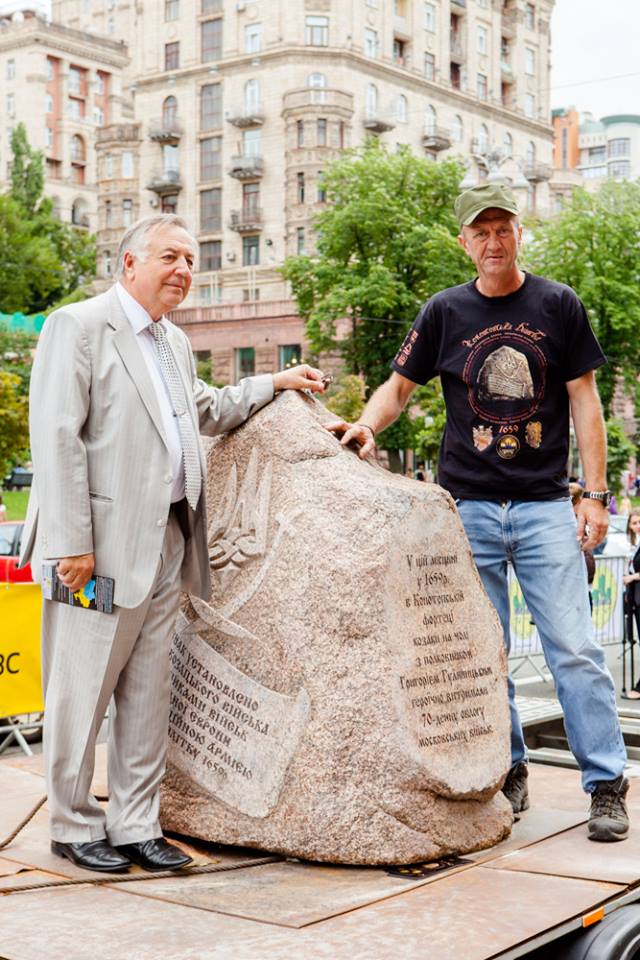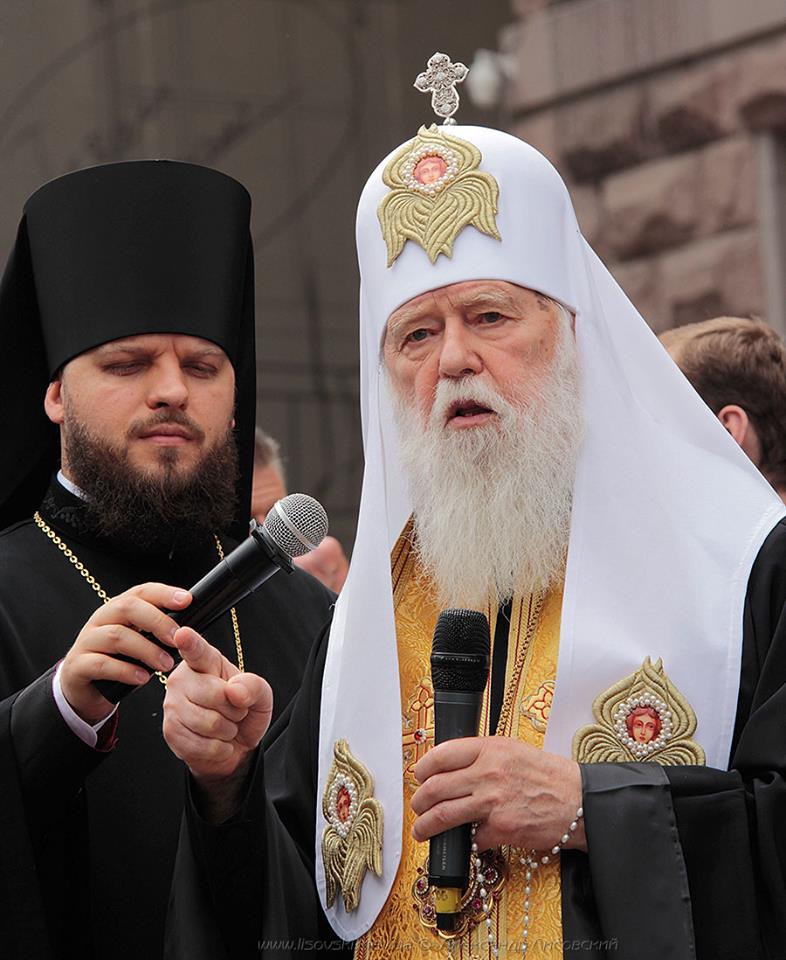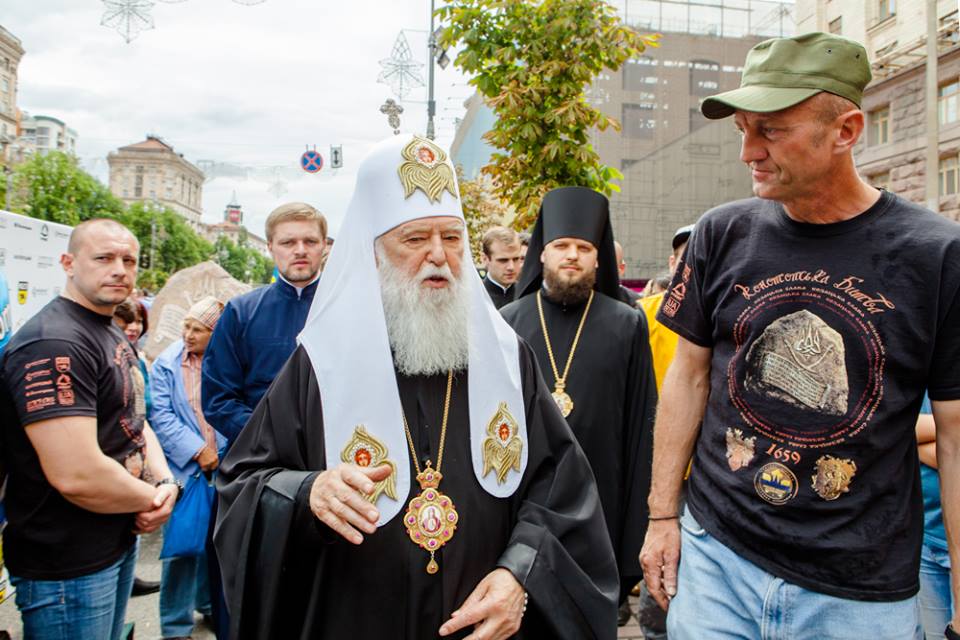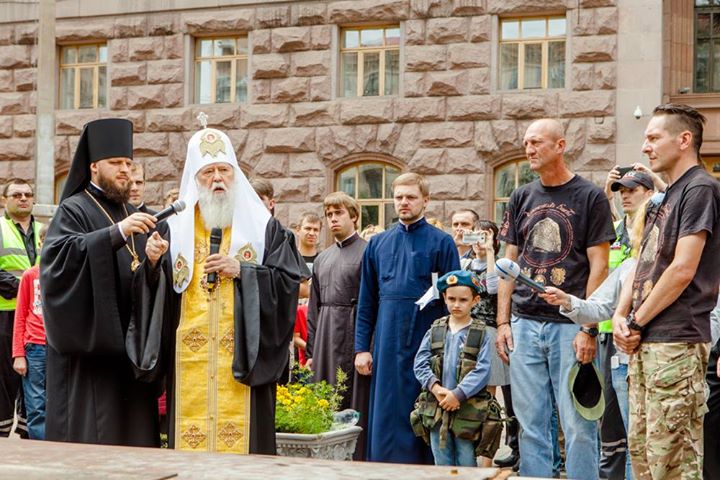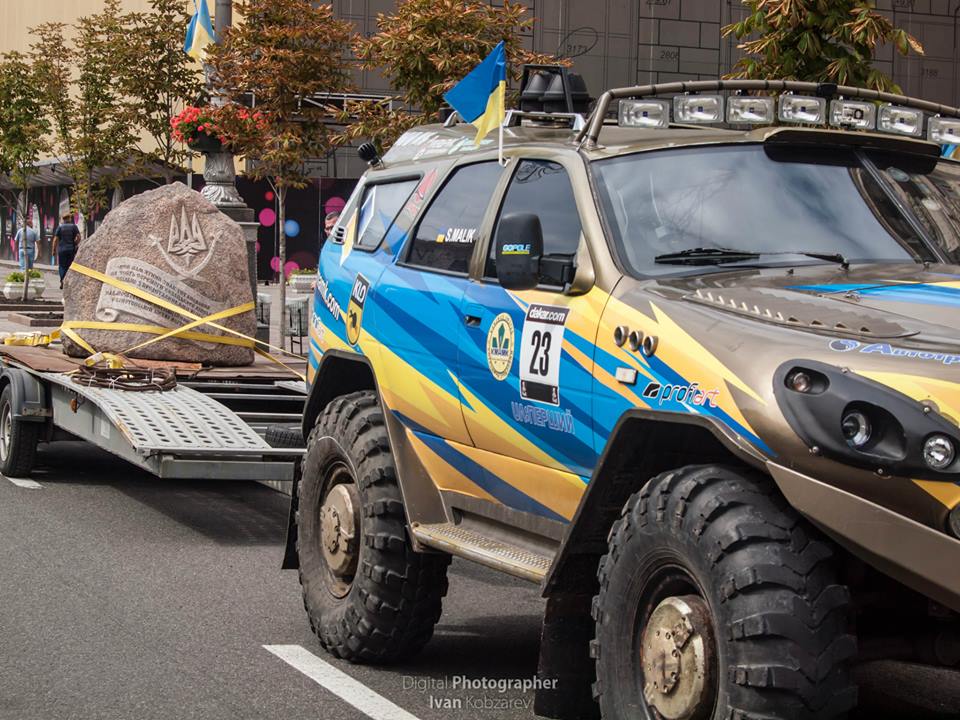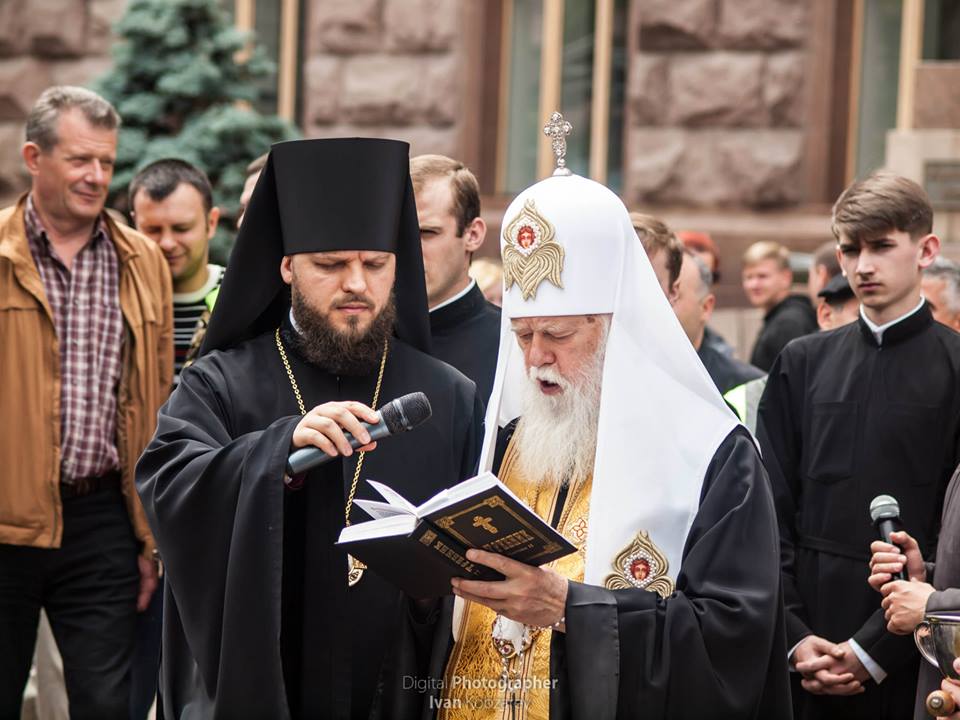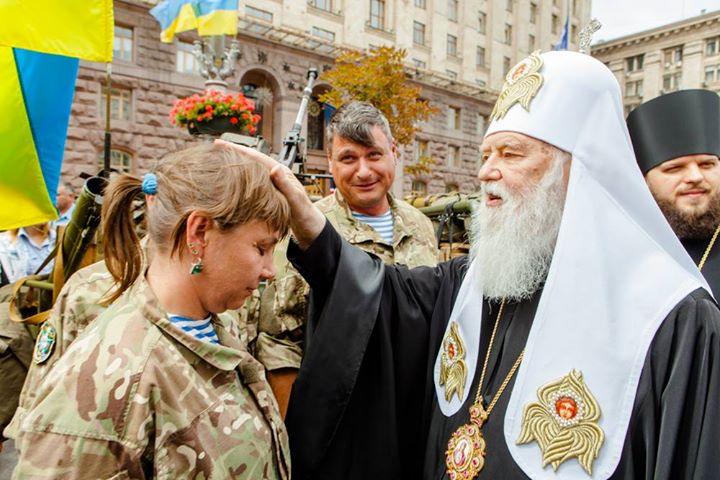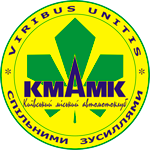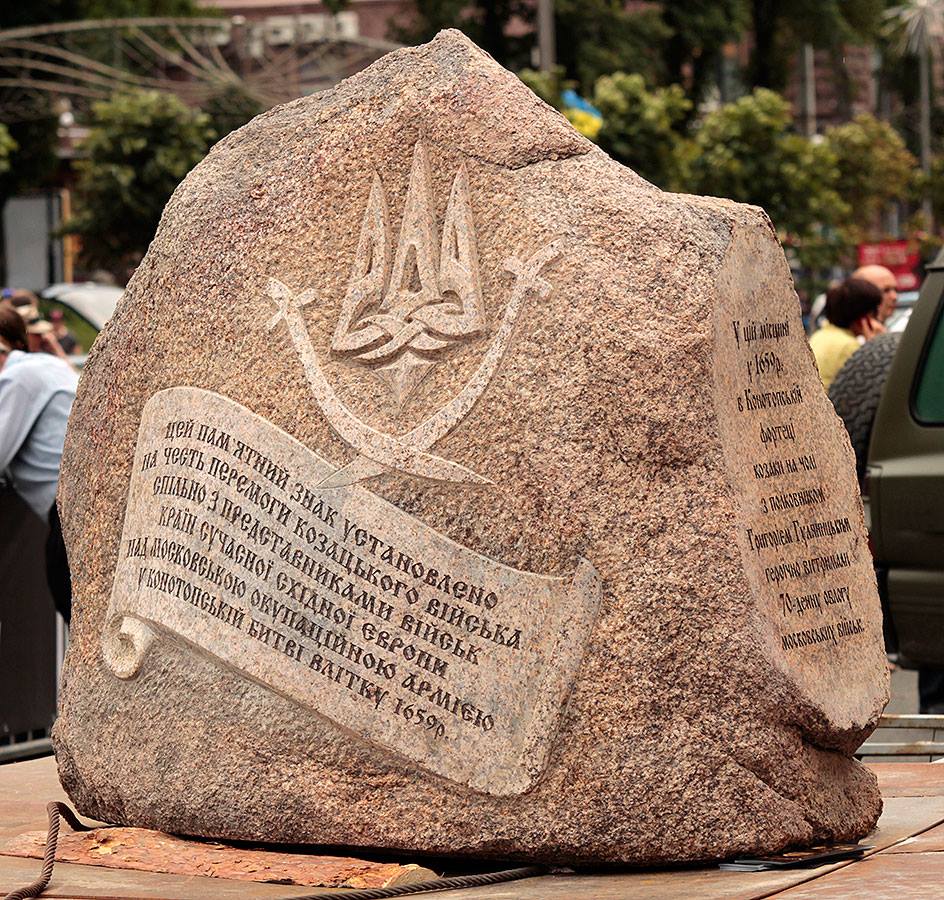
On 11 July 2015 on the initiative of KMAMK the memorial sign was erected in Konotop city park to commemorate the glorious victory in the Battle of Konotop.
Two weeks before, on the Constitution Day 28 June 2015, the memorial sign was blessed on Khreschatyk in Kyiv and then started a tour around Ukraine.
The blessing of the memorial sign, Khreschatyk, Kyiv, 28 June 2015
Glorious history
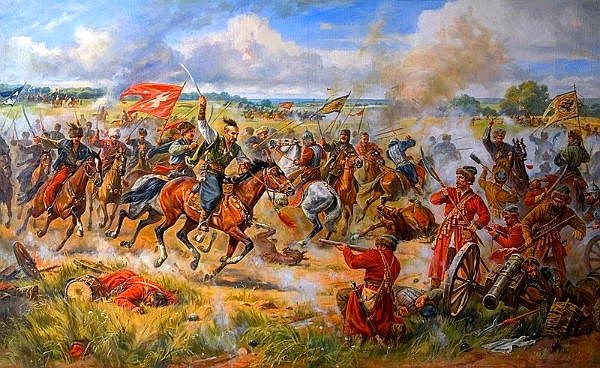
The Battle of Konotop (27 June — 29 June / 7 July — 9 July 1659) — the battle between Hetman Ivan Vyhovsky’s and Crimean Khan’s armies from one side and Muscovite forces from the opposite side near Konotop (now — Sumska oblast, Ukraine). It was one of the critical episodes of the Moscow-Ukrainian war 1658-1659 — Wikipedia
The Battle of Konotop, Artur Orlyonov, 2010
The realities of today make us remember the events of almost 360 years ago because there are so many parallels.
After the death of Bohdan Khmelnytsky, an internal confrontation started in Ukraine, as it did during the Revolution of Dignity in 2013-2014. At the same time, Moscow began to violate the Pereyaslav agreements. However, only a few years have passed since their conclusion (it took Russia 20 years to break the Budapest Memorandum).
Taking advantage of the internal conflict in Ukraine, the Muscovite government launched an armed invasion. Uniting with the enemies of Bohdan Khmelnytsky’s successor, Ivan Vyhovsky, Hryhoriy Romodanovsky’s army captured some Ukrainian cities, including Myrhorod, Lubny, and Pyriatyn, and not only slaughtered Vyhovsky’s supporters but also looted civilians. Again, clear parallels can be seen with the actions of Strelkov, Bezler, Mozhayev (Cossack Babay), and others. Later, realizing that Hryhoriy Romodanovsky’s forces were clearly insufficient, a large (according to some historians, 150,000 troops) army, led by Oleksiy Trubetsky, was sent to Ukraine. The same as at the end of August 2014, the Russian regular army with equipment and machinery entered Ukraine because the forces previously sent could not contain the situation.
In mid-April, Moscow troops approached Konotop, and on 21 April the shelling of the city began. The Great Moscow Army decided to capture Konotop before advancing further into Ukraine. The first assault was unsuccessful. For a long time – from mid-April to late June – the defenders of Konotop detained a massive Moscow army near the city walls. Colonel Hryhoriy Hulyanytsky from Nizhyn headed the defence. What is the analogy with the Donetsk airport, which had detained the enemy army for 242 days?
The delay of the Moscow army allowed Ivan Vyhovsky to organize his own army. In addition, an understanding of the threat posed by the Moscow Army to all countries in the region helped to obtain assistance from Poland and Crimea. Vyhovsky’s Cossacks were joined by Potocki’s and Jablonowski’s volunteer cavalry detachments of the Polish-Lithuanian Commonwealth and Lonczynski’s infantry. Bohdan Dubiaga, a Belarusian nobleman from the Mstislavl Voivodeship, and a small force of Serbian, German, and Moldavian soldiers also joined Vyhovsky’s army. An agreement was reached with the Crimean Khan Mohammed-Girey IV for assistance. He personally appeared in early June at the head of an army of 30,000. All sides took an oath of allegiance in battle. The result of coordinated action was the defeat of the Moscow army and the prospect of capturing Moscow.
However, Ivan Sirko’s attack on Crimea saved Moscow from capture. The Tatars were forced to abandon plans to march on Moscow and returned to Crimea. It is possible that if the Tatar-Ukrainian-Polish army had taken Moscow, Russia would have changed, as Sweden did after the defeat of Charles XII or Germany after the defeat of Hitler. Having lost their imperial ambitions, these countries refocused their strategies on economics and became world economic leaders. And so, in the face of Russia, we have a significant threat at the global level and a country whose economy is rapidly declining.
This memorial was erected in memory of the great victory of 28 June 1659 by the army of the peoples of Eastern Europe, who united against a common enemy.
